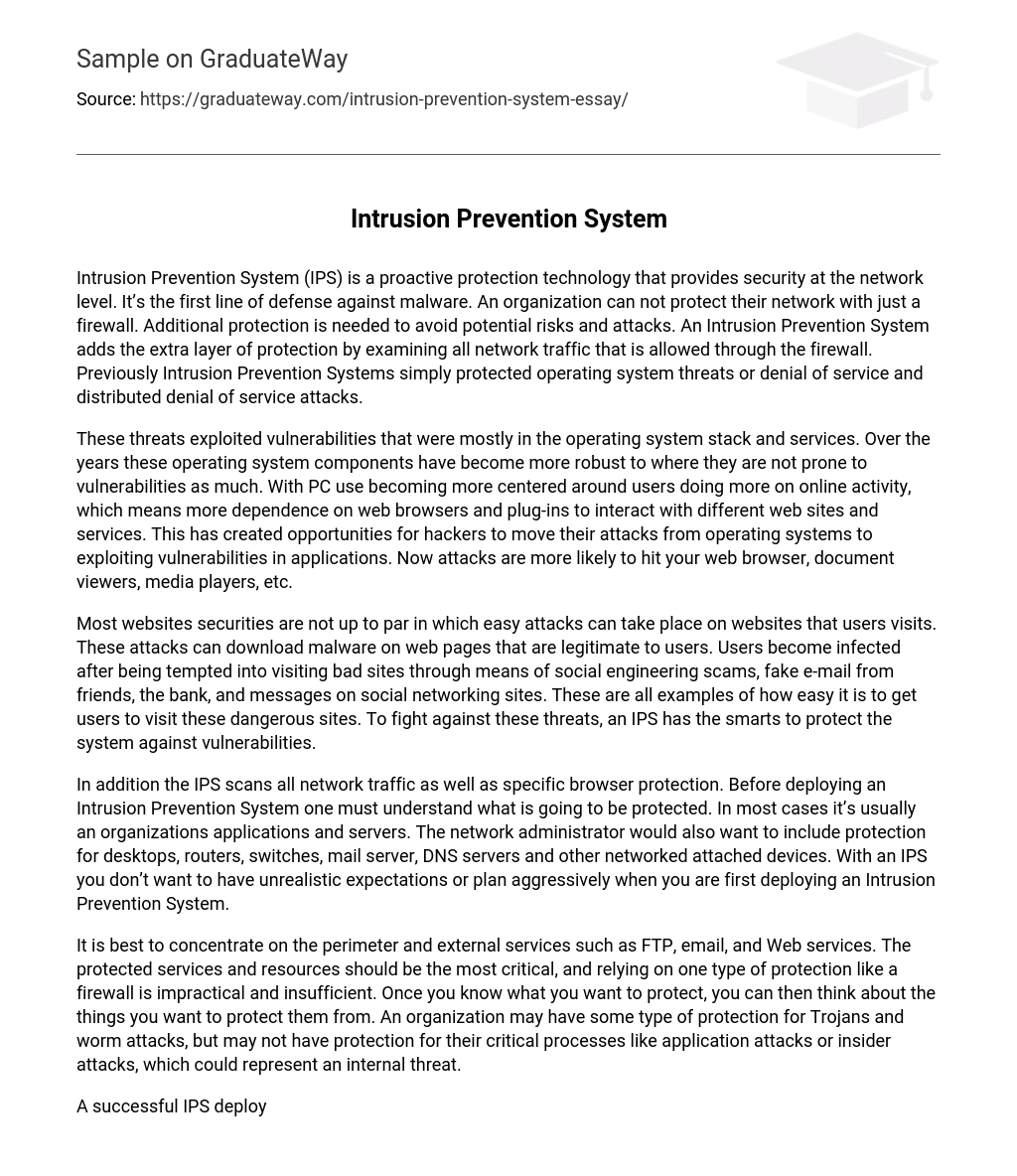Intrusion Prevention System (IPS) is a proactive security technology that offers network-level protection. It serves as the initial defense against malware. Merely relying on a firewall is insufficient for safeguarding a network. To mitigate potential risks and attacks, an organization requires additional protection. By scrutinizing all network traffic permitted by the firewall, an Intrusion Prevention System provides an extra layer of security. Initially, Intrusion Prevention Systems primarily focused on safeguarding against operating system threats, denial of service, and distributed denial of service attacks.
In the past, threats primarily targeted vulnerabilities in operating systems and services. However, with improved resilience, these components are now less susceptible. Yet, as web browsers and plug-ins play a larger role in online activities on PCs, users heavily depend on them to access websites and services. This change has created new chances for hackers to exploit flaws in applications. As a result, attacks increasingly concentrate on web browsers, document viewers, media players, and similar applications.
Some websites do not have enough security measures, making them easy targets for attacks when users visit. These attacks can lead to the downloading of malware onto legitimate web pages. Users can get infected by being tricked into visiting malicious sites through scams, fake emails from sources they know, or messages on social media platforms. These examples show how easily users are led to dangerous sites. To protect against these threats, an Intrusion Prevention System (IPS) has the intelligence to keep the system safe from vulnerabilities.
The Intrusion Prevention System (IPS) not only scans all network traffic, but also provides specific browser protection. Before implementing an IPS, it is crucial to determine the target of protection, which typically includes an organization’s applications and servers. However, the network administrator should also consider safeguarding desktops, routers, switches, mail servers, DNS servers, and other connected devices. When deploying an IPS for the first time, it is important to manage expectations and avoid overly aggressive planning.
It is advisable to focus on perimeter and external services, such as FTP, email, and Web services. The most crucial services and resources should be prioritized, as relying solely on a firewall for protection is not practical or sufficient. Once you have identified what needs to be protected, you can then consider the potential threats you want to safeguard against. While an organization might have some form of defense against Trojan and worm attacks, they may lack protection for critical processes like application attacks or insider attacks, which pose internal threats.
In order to have a successful IPS deployment, it is essential to define the specific threats that need to be protected against. Having a thorough understanding of the potential threats that could harm your environment is crucial for determining the deployment requirements. Exploits, spyware, and malware often fall into certain classifications, which can infiltrate an organization’s system. Properly categorizing these threats allows them to be effectively addressed as a whole, rather than individually. Furthermore, threats often exhibit similar behavior patterns in terms of their actions, infections, and spreading mechanisms.
In order to ensure a successful deployment of an IPS, the administrator must dedicate time to customize it for the organization’s specific environment. The placement of sensors plays a crucial role in maximizing their effectiveness. Any vulnerable areas within the organization’s infrastructure or applications should be considered. Typically, IPS devices are positioned behind firewalls and WAN routers, in front of server farms, or at other network access points.
The provided IPS architecture demonstrates protection at various points, including internet access, desktops accessing application servers, database servers, email servers, and DNS servers. These areas commonly require an additional layer of security. By utilizing different sensors, the network administrator can fine-tune the IPS to prevent attacks, manage network traffic, and receive alerts when a threat or attack occurs, allowing for appropriate action to be taken.
In summary, a successful IPS design and deployment necessitates comprehending the organization’s real-time threat protection requirements, identifying optimal placement points for the IPS deployment, investing time in correctly fine-tuning the system, and conducting an evaluation of the overall system usage. The goal is to ensure optimal protection for the company’s system and minimize vulnerability to threats and attacks. Incorporating an IPS with other protective devices and software can effectively reduce the organization’s vulnerabilities.





